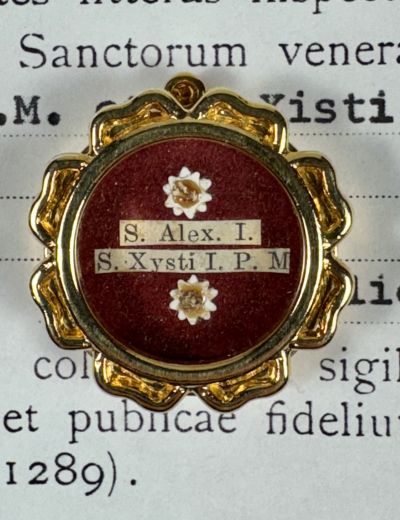Saint Pope Alexander I (†c. 115) was the bishop of Rome from about 108/109 to 116/119 who suffered martyrdom under the Roman emperor Trajan. He played an important part in the early development of the Church of Rome's emerging liturgical and administrative traditions. In the reign of the emperor Hadrian, Alexander I converted the Roman governor Hermes by miraculous means, together with his entire household of 1,500 people. He is said to have seen a vision of the infant Jesus. His remains are said to have been transferred to Freising in Bavaria, Germany in AD 834. He is venerated by the Eastern Orthodox Church and the Roman Catholic Church and his Feast Days is celebrated respectively in 16 March (Greek Christianity) and 3 May (Tridentine calendar).
Saint Pope Sixtus I, also spelled Xystus (†c. 126) was the bishop of Rome from c. 117 or 119 to his death. He succeeded Alexander I and was in turn succeeded by Telesphorus. Sixtus I instituted several Catholic liturgical and administrative traditions. His Feast Day is celebrated on 6 April.







 Change language to English
Change language to English